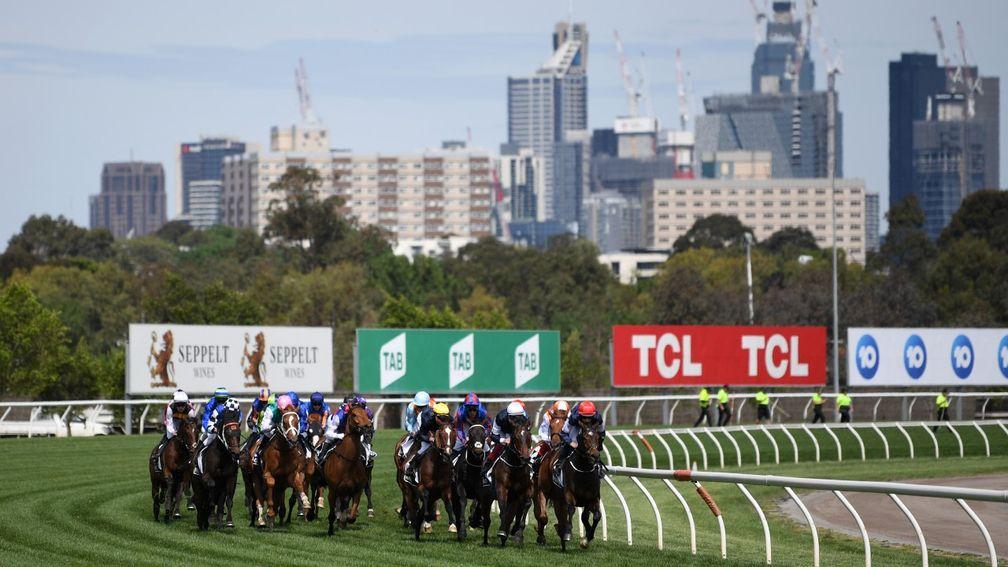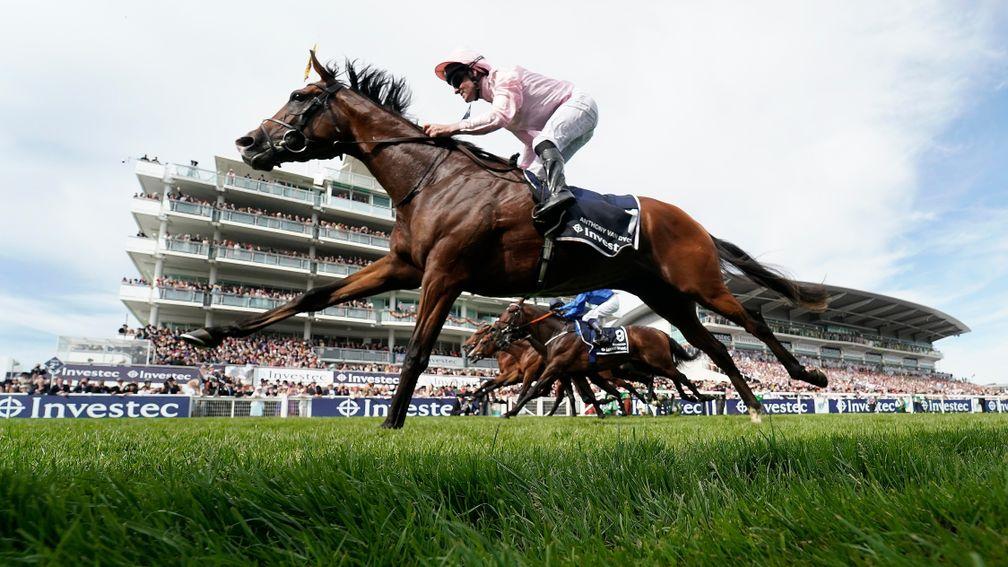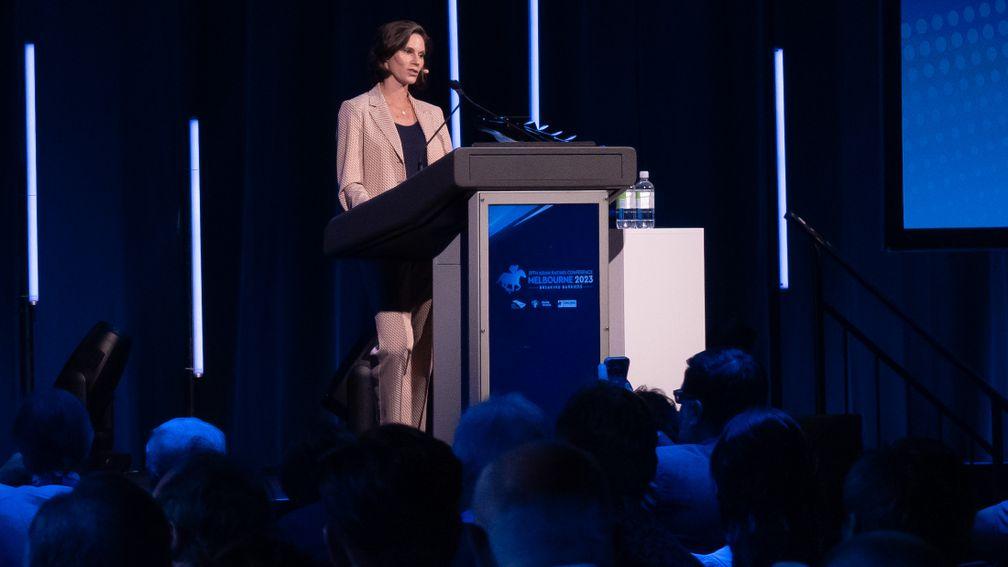'We don't apologise' - Racing Victoria vet defends Melbourne Cup protocols

The Australian vet synonymous with stringent protocols that decimated international participation in the Melbourne Cup has defended the measures and claimed public confidence in the sport has been boosted following two fatality-free runnings.
Dr Grace Forbes, Racing Victoria's general manager of veterinary services, has attained controversial status in Britain and Ireland having become the figurehead for heightened scanning and inspection procedures that were introduced following the death of Derby hero Anthony Van Dyck in the 2020 Melbourne Cup.
The Aidan O'Brien-trained star became the sixth overseas runner to be lost in the space of just eight years, a figure made even more alarming when set against the fact no Australian horse has been killed in the historic contest since 1979. Four of the casualties, all representing European stables, suffered catastrophic limb injuries, while from 2018 to 2020 three horses died having sustained serious injuries at the Werribee quarantine facility.
Deauville Legend finished third at Flemington in November when one of only two international contenders for a Group 1 plundered twice by Joseph O'Brien, who more recently trained State Of Rest to land the 2021 Cox Plate but then chose not to have runners in Melbourne last year having criticised Racing Victoria's approach.

O'Brien and William Haggas are among the international trainers set to be involved in Sydney's upcoming autumn carnival, while 2018 Melbourne Cup-winning trainer Charlie Appleby has not targeted the Flemington showpiece since stewards ordered the withdrawal of Godolphin stayer Ispolini on the recommendation of Forbes in 2019.
Explaining Racing Victoria's position at the Asian Racing Conference in Melbourne, Forbes said: "The Melbourne Cup is a sporting, cultural, social event viewed by 750 million people globally – and dead horses can't be part of our nation's great race.
"After the 2020 Melbourne Cup, the industry and general public demanded change. The raw emotion was the culmination of a number of incidents over the years and not solely what had happened in the Melbourne Cup. This was not acceptable and more needed to be done to ensure our international horses returned home safely.
"We took important steps to reduce the risk of injury - and we don't apologise for making these decisions to safeguard horse welfare and safety."
Forbes, who twice used the phrase, "injury is part of every sport – but death is not", when addressing the audience, added: "The initiatives we introduced set a new global benchmark. We are two years in and we haven't had any serious or fatal injuries in our international horses or any horses competing in the Melbourne Cup. This has improved the public confidence and social acceptance of horseracing in Victoria."
Significant changes are not expected to be implemented this year, although Forbes said: "Without reducing the safety protocols, our aim is to try to make it as easy, streamlined and efficient as possible for the international trainers. We really do value the contribution they make to the Spring Racing Carnival.
"No trainer is going to send out a horse knowing that horse is going to have an injury. What we learned is horses can appear to the best of our knowledge and the trainer's knowledge to be suitable to compete but there are things we cannot see with our eyes. We use tools to see those things."

Dr Chris Riggs, director of the Hong Kong Jockey Club's Equine Welfare Research Foundation, joined Forbes on the stage in Melbourne and conveyed to her complaints expressed by UK vets who believe Racing Victoria's actions are not sufficiently grounded in science.
Riggs additionally argued the requirements faced by international stables were "perhaps peremptory" but also described the governing body's approach as "not unreasonable" and offered his own theory that Melbourne Cup deaths may be attributable to "accumulative damage".
He said: "The majority of fractures come in horses who have fatigue injuries. Some would disagree but I think there is fairly convincing evidence that most horses who break down probably started the race with something that greatly increased the risk. If we can identify those horses, it would eliminate many of the fractures.
"Fractures are not completely preventable but can we prevent a large number of fractures? I honestly believe we probably can, although there are others who are very knowledgeable and experienced who believe I am over-optimistic."
Read these next:
Julie Harrington: whip rules had to change for Cheltenham - this can make the sport look better
Let's show the world that reform of the whip rules is no longer a British problem

Sign up to receive On The Nose, our essential daily newsletter, from the Racing Post. Your unmissable morning feed, direct to your email inbox every morning
Published on inAustralia
Last updated
- Watch: 'Easiest horse in the world' Dubai Honour too good for Vauban as he extends unbeaten Australian record
- 'Madness' - Gai Waterhouse expresses frustration after Group 1 card is postponed following 17mm of rain
- Ryan Moore to ride in Australia on Dubai World Cup night with James McDonald off to Meydan
- 'Pure ecstasy' - Welsh jockey makes Group 1 breakthrough ten years after quitting to take up office job
- Australia: 'She's lit up our lives' - Via Sistina dominates in Ranvet Stakes to land eighth Group 1 win
- Watch: 'Easiest horse in the world' Dubai Honour too good for Vauban as he extends unbeaten Australian record
- 'Madness' - Gai Waterhouse expresses frustration after Group 1 card is postponed following 17mm of rain
- Ryan Moore to ride in Australia on Dubai World Cup night with James McDonald off to Meydan
- 'Pure ecstasy' - Welsh jockey makes Group 1 breakthrough ten years after quitting to take up office job
- Australia: 'She's lit up our lives' - Via Sistina dominates in Ranvet Stakes to land eighth Group 1 win
